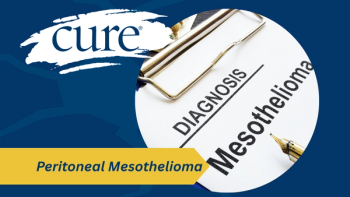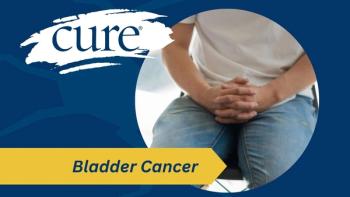
Three-Year Data Reinforce Benefit of Empliciti in Multiple Myeloma
In updated data from a phase 3 study, the addition of Empliciti reduced the risk of progression or death by 27 percent.
Read more of our coverage from the
The combination of Empliciti (elotuzumab), Revlimid (lenalidomide) and dexamethasone showed sustained improvements in progression-free survival (PFS) and overall survival (OS) for patients with relapsed/refractory multiple myeloma. Data from this three-year analysis of the ELOQUENT-2 trial were presented at the 2015 meeting of the American Society of Hematology, a gathering of more than 25,000 hematologists and other hematology/oncology professionals.
In updated data from the phase 3 study, the addition of Empliciti, a SLAMF7 antibody, reduced the risk of progression or death by 27 percent and overall survival (OS) was improved by 4.1 months versus Revlimid and dexamethasone alone. Additionally, the minimal incremental toxicity observed with Empliciti remained consistent.
“[Empliciti], a novel first-in-class immunostimulatory monoclonal antibody, in combination with Revlimid and dexamethasone demonstrated a durable and clinically relevant improvement in both progression-free survival and overall response rate,” senior investigator Paul G. Richardson, from the Dana-Farber Cancer Institute, said during his presentation. “I'm very please to see that this benefit was sustained. Very importantly, we see a delay in next therapy, which is very relevant.”
On November 30, the
In the study, 646 patients at a median age of 66 years were randomized in a one-to-one ratio to Empliciti plus Revlimid and dexamethasone (321 patients) or Revlimid and dexamethasone alone (325 patients). Patients had received a median of two prior therapies before entering the trial and 35 percent were refractory to their last therapy.
The dual primary endpoints of the study were PFS and objective response rate (ORR). Key secondary endpoints focused on OS and safety. Additionally, post-hoc analyses were conducted for pain assessment using the Brief Pain Inventory-Short Form (BPI-SF). A sustained improvement in pain was defined as a decline of at least three points for at least two consecutive 28-day treatment cycles.
In the Empliciti arm, the antibody was administered intravenously at 10 mg/kg once a week for the first two cycles followed by biweekly. Dexamethasone was administered intravenously at 8 mg prior to infusion of Empliciti and orally at 28 mg. In the control arm and for weeks without Empliciti, dexamethasone was administered orally at 40 mg. Revlimid was administered at 25 mg orally on days 1 to 21 of each cycle for both groups.
Median PFS with Empliciti was 19.4 versus 14.9 months with Revlimid and dexamethasone alone. The three-year PFS rate was 26 percent with Empliciti versus 18 percent with the doublet alone, representing a relative improvement of 44 percent at three years. The ORR with Empliciti was 75 percent compared with 66 percent in the control arm. The complete response (CR) and very good complete response rate with Empliciti was 34 percent versus 29 percent for Revlimid and dexamethasone alone. The CR rate was 5 percent versus 9 percent, with and without Empliciti, respectively.
The time to next treatment was 12 months longer with Empliciti (33 vs 21 months). Overall, 38 percent fewer patients started subsequent therapy during the follow-up period with Empliciti, representing a substantial clinical benefit for patients, according to Richardson.
The median OS at three years was 43.7 months compared with a median of 39.6 months with the doublet. At the three-year interim analysis for OS, 47.3 percent of patients remained alive in the Empliciti arm versus 41.2 percent in the control group. The OS advantage held up across subgroups, particularly for those with high-risk cytogenetics.
In the two-year data that were the basis for the FDA approval, the ORR was 79 percent with Empliciti versus 66 percent with Revlimid/dexamethasone alone. Median PFS with Empliciti was 19.4 versus 14.9 months with Revlimid and dexamethasone alone. At this point, OS data were not yet mature.
In patients who experienced a response, there was a sustained improvement in BPI-SF scores that favored the Empliciti arm. An improvement in patient-reported pain was experienced by 74 patients treated with Empliciti and for 56 patients in the Revlimid/dexamethasone arm.
At the analysis, 26 percent of patients continued to receive Empliciti versus 14 percent in the control arm. Treatment discontinuation was primary due to progression in both arms. The most frequently reported grade 3/4 adverse events (AEs) with and without Empliciti, respectively, were anemia (15 percent vs 16 percent) and neutropenia (15 percent vs 16 percent).
The most common all-grade non-hematologic AEs with and without Empliciti, respectively, were fatigue (48 percent vs 40 percent), diarrhea (48 percent vs 37 percent), pyrexia (38 percent vs 28 percent), constipation (36 percent vs 28 percent), cough (33 percent vs 19 percent), and muscle spasms (30 percent vs 27 percent).
Infections of any grade were seen in 83 percent of patients in the Empliciti arm compared with 75 percent with Revlimid and dexamethasone alone. Once adjusting for treatment exposure, the rates were similar between the two arms. Infusion reactions, which were mostly grade 1/2, occurred in 10 percent of patients in the Empliciti arm.
"Updated safety and tolerability data are consistent with previous findings, confirming that there is minimal incremental toxicity associated with the addition of Empliciti to Revlimid/dexamethasone," said Richardson.
A number of clinical trials continue to assess Empliciti for patients with multiple myeloma. The ELOQUENT-1 trial is looking at Empliciti in combination with Revlimid and dexamethasone in newly diagnosed patients. Additionally, in the relapsed/refractory setting, Empliciti is being assessed in combination with Pomalyst (pomalidomide) and dexamethasone and with the PD-1 inhibitor Opdivo (nivolumab).
"There's some very exciting trials going forward combining Empliciti with other immuno-oncology agents, such as [Opdivo], in the future," concluded Richardson.
Dimopoulos MA, Lonial S, White D, et al. Eloquent-2 Update: A Phase 3, Randomized, Open-Label Study of Elotuzumab in Combination with Lenalidomide/Dexamethasone in Patients with Relapsed/Refractory Multiple Myeloma - 3-Year Safety and Efficacy Follow-up. Presented at: 57th American Society of Hematology Annual Meeting; Orlando, Florida; December 5-8, 2015. Abstract 28.





